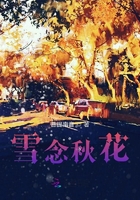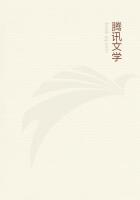The hypotheses constructed on these premises are incorrect. First, to accept the phenomenon of crowded farming as social is to leave an economic question unanswered. Second, the existence of unlimited labor supply or labor "surplus" is an assertion which in fact has no empirical foundation. Third, it is presumptuous to say that the peasants are ignorant of farming methods, for competition will induce sophistication. It is far closer to the truth to say that it is the economic theorist who does not know. Fourth, the "rock-bottom" is soft and variable. Finally, lacking an explicit behavioral postulate, the average-product argument is inconsistent with wealth maximization under private ownership of resources.
The theory of share tenancy derived in chapter 2 provides a different explanation for higher ratios of labor to land in Asian agriculture: the peasants' landholdings are small because their alternative earnings are low. And their low earnings are due to the small area of arable land relative to labor force, together with the fact that farming skill and knowledge are not highly valued in other industries. Under private ownership of land, it is to the landowner's interest that no negative marginal effort is "disguised." Given the existing resources, crowded farming is the result of wealth maximization, not of "irrationality."
It is not difficult to show that "original" theorems or hypotheses intended to explain resource allocation in "underdeveloped" agriculture are unnecessary. For Asian agriculture, the aforementioned hypotheses can be readily dismissed in light of observations on land use and the analysts' neglect of the pertinent property right constraints.
First, let us take a closer look at the so-called overcrowded farming in Asia, which "overcrowding" cannot be denied by Western standards:
The growing seasons of rice and cane crops overlap. At the time cane should be planted, the preceding rice crop is not yet ripe. This problem is solved by planting cane among the ripening rice plants one month before the latter are to be harvested. Because the distance between [cane] rows is 1.39 meters and between [cane] plants 0.4 meter, farmers often plant peanuts, sweet potatoes, cotton and soybeans between the rows of canes in summer. These interplanted crops are harvested in November or December before the canes grow tall.[2]
Examples as intricate as this are abundant.[3] But as J. L. Buck points out:
It is evident from this maze of detail on the actual use of land by crops in China, that, in spite of the intensive use of crops for human utilization directly rather than indirectly by first producing animal products, still greater production could be obtained.[4]
While Buck is amazed by the various methods of intensive farming and soil conservation in China, the flexibility of land use is frequently ignored by development economists. An unimaginative theorist, unfamiliar with the actual situation, might easily consider the crowded tilling wasteful, and hastily develop fancy theorems and policies to slay the dragon.
Evidence suggests that, before the agrarian reforms in Asia, the marginal product of agricultural labor was not only positive but also nowhere near zero. Take Taiwan, for example, where in 1948 the landholding per person in farming was about as small as one could find. As was shown in chapters 7 and 8, however, increases in labor and other inputs on tenant farms under the rental share restriction led to significant increases in outputs.
Indeed, the fact that common crops are grown confirms that the marginal product of labor is positive. This is so because the same land can be used to cultivate other crops, for example, vegetables. Vegetable crops have considerably higher market values than common crops, and they generally require eight times as much labor to cultivate.[5] Forgoing some common crops for vegetable planting will lead to increasing labor input, and a higher gross income. Yet only a small portion of cultivated fields has been used for vegetables in Asia.[6]
Zero marginal productivity of labor implies a condition where it is no longer possible to choose a more labor-intensive crop to obtain a higher income, which is refuted by the facts. It further implies that there exists no idle land margin or that it is impossible to adopt a faster crop rotation rate with increasing labor input and income, which is also refuted by the facts. It implies, too, that most dry fields are converted into paddy fields through the use of labor. And the list of refuting evidence goes on.
A second reason for rejecting the hypotheses of disguised unemployment and the dual economy lies in their neglect of the existing system of property rights. Under private ownership of land, disguised unemployment cannot be derived from standard economic theory, regardless of how crowded farming may be. Under common ownership, however, zero or negative marginal product of labor is consistent with the general body of economic theory.[7] This is so because competition among users will reduce the rental value of land to zero, thus equating the average product of labor with the wage rate (or alternative earning).
Suppose that, as development economists have taken for granted, empirical evidence did confirm that the marginal product of labor is lower in agriculture than in other industries. If their hypotheses are intended to interpret Asian experience in the past twenty years, as many of them are, then they are still incorrect. They are incorrect because private farm land ownership with free markets, conditions which their hypotheses have implicitly presupposed, have been rare in Asia since 1950. The various agrarian reforms in Asia, as was mentioned in chapter 1, may in fact have led to "dual" economies. In particular, as analyzed in the second part of this study, the rental share restriction yields a condition where the marginal product of labor is lower in tenant farms than elsewhere. This result is derived entirely from standard economic theory.















